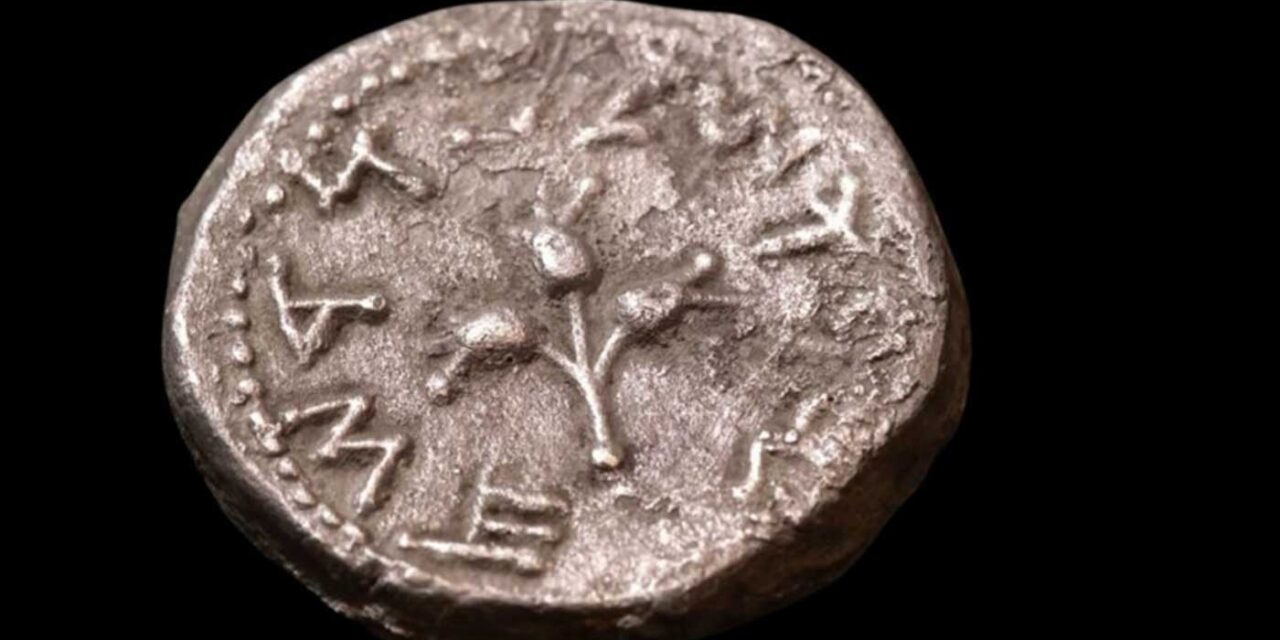A 2,000-year-old silver half-shekel bearing the Hebrew inscription “Holy Jerusalem” has been discovered in the Judean desert, yet more evidence of Jewish history in Israel and their capital city.
The amazing discovery was made alongside one of the streams of Ein Gedi, sticking out of the ground at the entrance to a cave. The rare coin is dated to 66/67 AD, during the days of the first Jewish revolt against the Romans.
Yaniv David Levy, a researcher in the IAA’s Coin Department, said, “You can see an inscription written in unvowelized Hebrew… on this coin from the first year of the rebellion. This may be proof of the process of formulating inscriptions… in later years of the rebellion, the inscription ‘Holy Jerusalem’ is written in plene spelling [in which letters normally omitted are present].”
He noted also that the Ein Gedi coin features three pomegranates in the center of the coin, “a familiar symbol on the Israeli pound, used by the State of Israel until 1980.”
A goblet appears on the other side, and above it the Hebrew letter alef is inscribed, indicating the first year of the rebellion, as well as the inscription “Hatzi Shekel” [half shekel], indicating the value of the coin.
Heritage Minister Rabbi Amihai Eliyahu said: “The exciting discovery brings further evidence of the deep and indisputable ties between the Jewish people and Jerusalem and the Land of Israel.”
IAA director Eli Escusido added: “The coin is direct and touching evidence of the Jewish rebellion against the Romans—a turbulent period in the life of our people from 2,000 years ago, during which extremism and discord divided the people and led to destruction. We have returned here after 2,000 years of yearning, and the city of Jerusalem is back to being our capital, but there is nothing new under the sun—the disputes have not ended. Finding this coin reminds us all of our past, and why we must strive for agreement.”
Related Articles:










